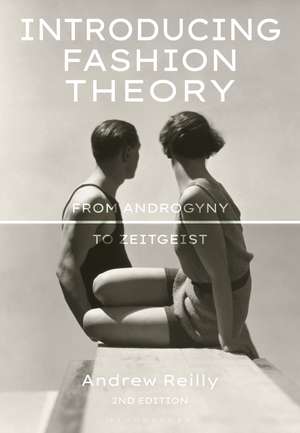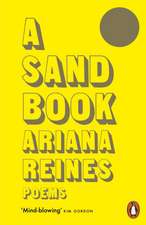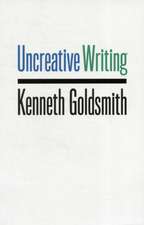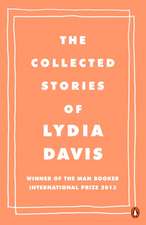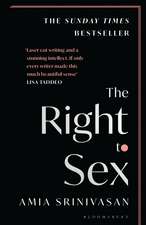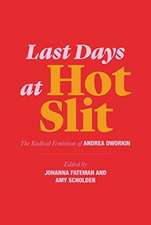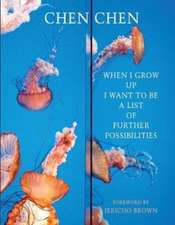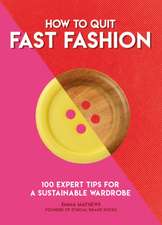Introducing Fashion Theory: From Androgyny to Zeitgeist
Autor Andrew Reillyen Limba Engleză Paperback – 9 dec 2020
| Toate formatele și edițiile | Preț | Express |
|---|---|---|
| Paperback (1) | 151.65 lei 3-5 săpt. | +24.59 lei 7-13 zile |
| Bloomsbury Publishing – 9 dec 2020 | 151.65 lei 3-5 săpt. | +24.59 lei 7-13 zile |
| Hardback (1) | 466.88 lei 6-8 săpt. | +44.26 lei 7-13 zile |
| Bloomsbury Publishing – 9 dec 2020 | 466.88 lei 6-8 săpt. | +44.26 lei 7-13 zile |
Preț: 151.65 lei
Preț vechi: 165.42 lei
-8% Nou
Puncte Express: 227
Preț estimativ în valută:
29.03€ • 30.19$ • 24.32£
29.03€ • 30.19$ • 24.32£
Carte disponibilă
Livrare economică 20 februarie-06 martie
Livrare express 06-12 februarie pentru 34.58 lei
Preluare comenzi: 021 569.72.76
Specificații
ISBN-13: 9781350091917
ISBN-10: 135009191X
Pagini: 160
Ilustrații: 50 mono illus
Dimensiuni: 169 x 244 x 21 mm
Greutate: 0.26 kg
Ediția:2
Editura: Bloomsbury Publishing
Colecția Bloomsbury Visual Arts
Locul publicării:London, United Kingdom
ISBN-10: 135009191X
Pagini: 160
Ilustrații: 50 mono illus
Dimensiuni: 169 x 244 x 21 mm
Greutate: 0.26 kg
Ediția:2
Editura: Bloomsbury Publishing
Colecția Bloomsbury Visual Arts
Locul publicării:London, United Kingdom
Caracteristici
Concise and accessible introduction to key fashion theories for introductory level students, suitable for any fashion course.
Notă biografică
Andrew Reilly, PhD, is an Associate Professor of Fashion Design and Merchandising at University of Hawaii, Manoa, US.
Cuprins
1. OverviewIntroduction to theoryWhy use theory?Methods of inquiryWhat is fashion?Who has fashion?Fashioning the bodyThe tipping pointSemiotics: How does fashion mean?Organization of textBoxed case 1.1: Maslow's hierarchy and fashionBoxed case 1.2: Classics can have fashionable details tooSummaryKey TermsDiscussion questionsLearning activitiesNotesFurther reading2. The Fashion SystemMarket Infrastructure theory: The role of gatekeepersTrickle Across theory: Why new styles appear at onceInnovation theory: The role of new productsHistoric resurrection: Haven't I seen this before?Branding: Creating an identity SummaryBoxed case 2.1: Blockchain technology and intellectual property Boxed case 2.2: Fake followersBoxed case 2.3: John Fairchild and the midi mistakeKey TermsDiscussion questionsLearning activitiesNotesFurther Reading3. Fashion and the IndividualThe Public, Private, and Secret Self: What we reveal to othersBody image: Feelings about our bodiesAesthetic perception and learning: Why are we attracted to the clothes we see?Shifting Erogenous Zones: Reveal and concealHistoric Continuity theory: Small changes over timeSymbolic Interaction theory: The individual and societyBoxed case 3.1: One individual starts a trendBoxed case 3.2: The color purple SummaryKey TermsDiscussion questionsLearning activitiesFurther reading4. Fashion and SocietyTrickle Down theory: Fashion from the top downTrickle Up theory: Fashion from the bottom upScarcity/Rarity: The desire for limited itemsConspicuous consumption: The obviousPolitical use of dress: Social movementsGender: Masculinity, femininity, androgynyBoxed case 4.1: Sensible British TasteBoxed case 4.2: La Sape Society SummaryKey TermsDiscussion questionsLearning activitiesNotesFurther reading5. Fashion and CultureZeitgeist: Sign of the timesSpatial diffusion: Fashion on the moveCultural identity: Race, ethnicity, and hybridityStyle tribes: Fashion from the streetBoxed case 5.1 Hate coutureSummaryKey TermsDiscussion questionsLearning activitiesNotesFurther reading6. ConclusionConsuming fashion: Selecting, purchasing, disposingOne phenomenon, many theoriesWhat is fashion? A paradoxSummaryKey TermsDiscussion questionsLearning activitiesFurther readingBibliographyIndex
Recenzii
[Praise for the first edition]Brings a breath of fresh air to fashion theory. This book puts together a collection of insights and approaches that will facilitate the student's creative thinking process and their capacity to develop keys to solve problems.
Fantastic resource for fashion theory!
Introducing Fashion Theory: From Androgyny to Zeitgeist illustrates the scholarly study of fashion in addition to helping students and fashion professionals understand the complexity, meaning, and direction of fashion. Using historic, cultural, and current fashion examples, the book helps explain our everyday clothing habits and the paradoxical nature of fashion
Fantastic resource for fashion theory!
Introducing Fashion Theory: From Androgyny to Zeitgeist illustrates the scholarly study of fashion in addition to helping students and fashion professionals understand the complexity, meaning, and direction of fashion. Using historic, cultural, and current fashion examples, the book helps explain our everyday clothing habits and the paradoxical nature of fashion
